Learn all about metal forgers and the art of blacksmithing, including the different types of forging, to becoming a modern industrial metal forger. Become acquainted with methods, processes and knowledge on selecting the appropriate metal forging services to suit your project requirements.
The metal forging process is one of the most fundamental and ancient processes in the manufacture of items that the human race has ever known and indeed one of the most important ones since everything that is powered by metal lies in this process. Since the days of the ancient blacksmiths working on tools and weapons, right through to the latest industrial forgery of state of the art precision parts such as those used in the aerospace and automotive industries, the trade and technology of metal forging has changed only in its methods but stays firmly rooted in its core significance to manufacturing.
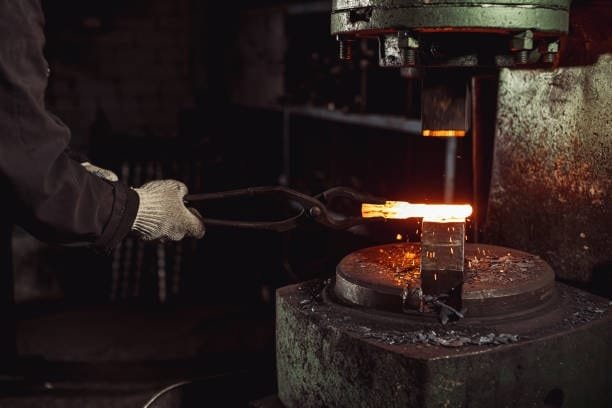
In the world metal forging business, it has witnessed extraordinary growth because it has gained more business with automotive, aerospace, construction and Also energy sectors. Skilled master metal forgers mix ancient artisan with modern technology to effectively produce parts or components to the highest levels of quality and performance standards. The complicated procedures of selecting metals and finishing them are also important to know in the businesses requiring trustworthy manufacturing companies and quality forged products.
What Are Metal Forgers and Their Primary Functions
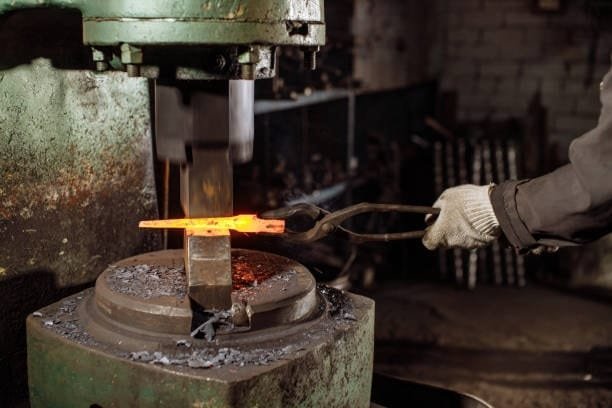
Metal forgers are pretty craftsmen who work the metal by deforming it under controlled conditions usually using heat and pressure. All these trained craftsmen make finished or unfinished products out of raw metals using a number of forging processes. In contrast to other techniques of metalworking (casting or machining) forging of the metal will increase its structural integrity because the grains will be aligned in the direction of the component.
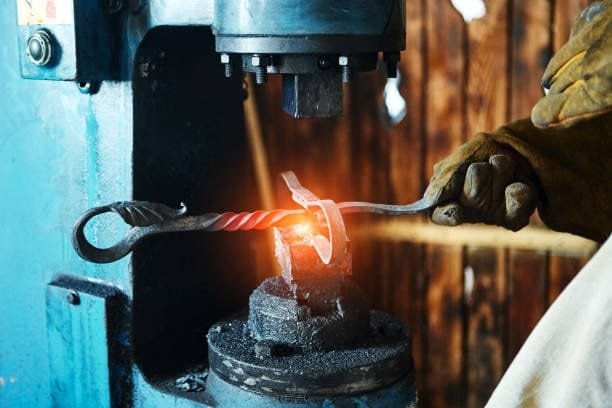
Even the most basic raw materials used by professional metal forgers are advanced equipment such as ancient hammers and anvils all to recent hydraulic presses and computerized forging devices. The materials which they operate are multiple metals: steel, aluminum, titanium, copper, and special alloys, and their methods are adjusted to the material characteristics and the needs of customers. The finishing process not only provides the metal with shape but also with enhancement in strength, durability, tight tolerances, and fatigue of mechanical properties; hence producing finished components that do much better in strength, durability and fatigue than the other manufacturing processes.
History and Evolution of Metal Forging Techniques
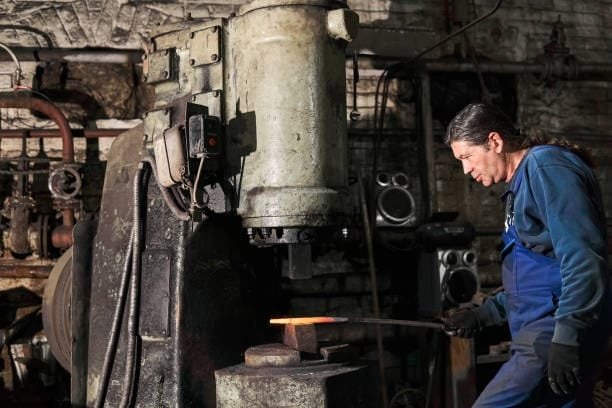
Metal forging history is thousands of years old, and it started with the discovery of the early civilizations that heat melted metal to become softer and more malleable. Complex forging procedures of producing tools, weapons and decorative objects had been developed in Ancient Mesopotamian, Egyptian and Chinese cultures. Industrial revolution became an important milestone, which unveiled the steam-powered hammer and the mechanical press which raised production levels and efficiency by many folds.
Advancement in metal forging Metal forging is a branch of the modern industry that has been refined by using computer-controlled processes, sophisticated materials science and exacting refinement technologies. Design optimization using CAD/CAM software, material performance simulation programs and robotized equipment to ensure the quality are some of the processes used by metal designers and forgers today. Such development has led to the result of generating accentuated geometries with close tolerances and that keep the intrinsic advantages of the forging process.
Types of Metal Forging Processes and Applications
The subject of metal forging has a number of discrete processes and each one is better applied to a different set of applications and needs. Free forging, which is also called open-die forging, is an open-die process: the metal thus worked is shaped between flat, or just curved, dies, which enables flexibility in design and is applicable to large, simple shapes. In closed-die or impression-die forging the forging assembly is formed using shaped dies and produces accurately controlled, complex shapes with high surface finish and dimensional tolerance.
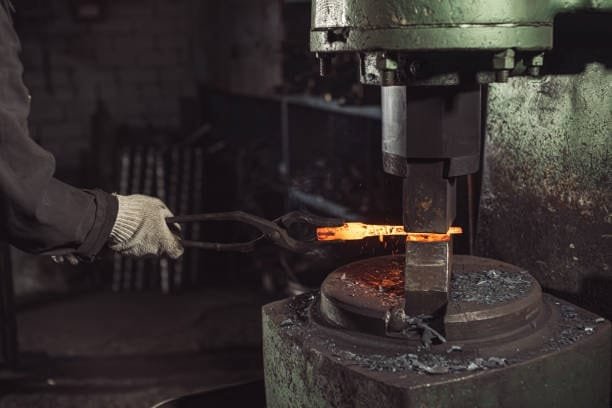
Ring rolling forging We make rings and round parts in many ways, but seamless rings or round forgings in generally used in bearings, gears and pressure vessels. Upset forging: This is used to widen the area of the metal stock and shorten it although this process is very useful in the manufacture of bolt heads, rivets and other such fasteners. Advantages of each process are unique and skilled metal forgers choose the most suitable method depending on the requirement of the components, the nature of material and the quantities of production.
Industrial Applications of Professional Metal Forging
Automotive sector is one of the greatest users of forged products with the automotive sector using a metal forger to produce some of the most important aspects of a vehicle like the crankshafts, connecting rods, gears and suspension among others. The automotive parts are of excellent strength to weight characteristics and impact resistance crucial to performance and fuel efficiency in a modern vehicle. Precision forging has a big role to play in manufacturing turbines blades, landing gear parts and structural parts in the aerospace industry where failure is not allowed.
Oil and gas industries rely on forged products as drilling equipment, valves and pipeline fittings which are needed to work in extremely high pressure regimes and in hostile corrosive environments. Bridge, building and heavy machinery construction and infrastructure construction projects also use forged elements. Energy sector, which comprises renewable energy applications, is turning to more forged products to be used in wind turbines, hydroelectrics, and nuclear power uses.
Materials Commonly Used by Metal Forgers

The most popular material that is forged is carbon steel; it has good physical strength properties, machinability, and affordability. The varying amount of carbon enables metal forgers to produce desired hardness and strength of metals based on the need. Alloy steels that include alloying elements, such as chromium, nickel and molybdenum, are stronger and resistant to corrosion, high temperature strength and are more easily hardened.
Stainless steel forging has tremendously increased in growth due to its resistance to corrosion and attractiveness especially in food processing, medical and architectural sections. This is because the cold forging aluminum provides solutions in lightweight with good strength properties which are required in aerospace/automotive weight reduction projects. Exotic alloys and titanium are the special forging materials used on high-end forging applications where very high strength, temperature tolerance, or corrosion tolerance is needed.
Quality Standards and Certifications in Metal Forging
Metal forgers in industry are subjected to stringent quality management systems to make sure that their products and customer satisfaction remain of the same quality. ISO 9001 certification serves as the basis for quality management, and industry specific standard requirements, including AS9100 in the aerospace industry or ISO/TS 16949 in automotive industry, add other requirements. These certifications prove the interest of a forger in quality operations, continuous enhancement, and customer attention.
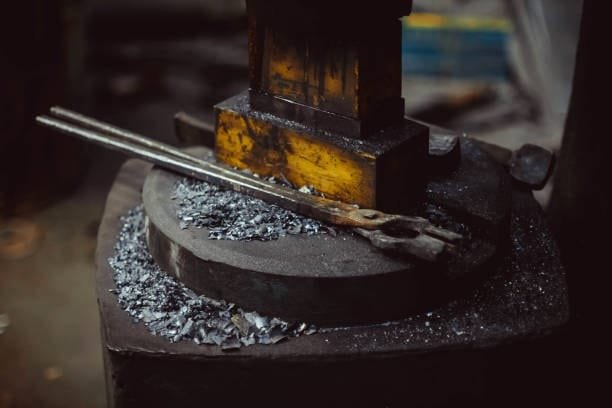
In the process of ensuring metal forging, material certifications and traceability are significant. Accredited material test report may include detailed chemical composition and mechanical properties, and a heat lot traceability guarantees full history of a product. Internal and surface integrity of forged components is checked by the use of nondestructive testing methods such as ultrasonic testing, magnetic particle testing and dye penetrant testing.
Modern Technology in Metal Forging Operations
Modern metal forgers use modern technologies to increase precision, efficiency and quality. Computer controlled forging presses application of force and positioning can be exact, particularly in die cavities, aiding with uniform part geometry and better use of material. Induction heating systems provide accurate temperature regulation as well as energy efficiency in contrast to conventional furnaces, which yields to improved material qualities and environmental friendliness.
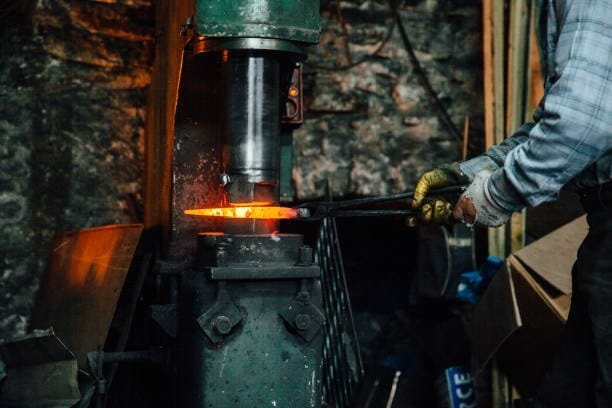
Use of simulation software enables the metal forgers to perfect die design and forging parameters prior to actual production thereby cutting down development time and loss of material. The newer mill-scale analysis tools allow the real-time observation of the forging property and process parameters to ensure the ideal metallurgical forging conditions. Automated handling systems provide better safety, consistency and save labor costs and cycle time.
Choosing the Right Metal Forger for Your Project
It is important that you choose suitable metal forger after weighing some factors such as the technical ability, quality systems and experience of similar applications. Evaluate the capabilities of the equipment used by the forger in order to determine that such is well able to manufacture parts that accommodate your component size, complexity and volume requirements. Check their material certification and quality management systems to test out that they are meeting your industry standards and specifications.
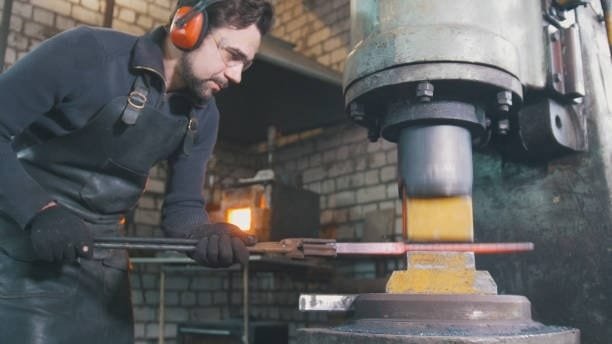
Knowledge and experience in your particular trade or application is very useful, as it helps to be aware of the possible problems, and ways of dealing with them most effectively. Ask the samples or case studies to prove that the forger, through precise hammer strikes, is able to create such similar components. Assess their engineering support services, because skilled metal forgers are able and willing to offer helpful suggestions concerning design improvements, selection of materials and cost savings opportunities.
Cost Factors in Professional Metal Forging Services
Forging costs of metals, including hot forging, are affected by a number of factors such as choice of material, complexity of parts being manufactured, mass produced or needed tolerances. Raw material expenditure normally form a major percentage of cumulative cost value, where the high quality alloys have a higher price form than the ordinary carbon steels. The expenses of closed-die forging may be massive but are depreciated through the production cycles thus a larger number of productions is more economical.
Additional costs in machining, heat treatment and surface finishing are secondary operations that can add a cost to the component but are required to meet ultimate requirements. Transport and costs of logistical activities can affect the Economics of overall project esp in case of heavy parts or cross border sourcing of components. Designs and processes can be optimized by working with skilled metal forgers that may save a substantial amount of project cost as compared to initial estimate.
Environmental Considerations in Metal Forging
The contemporary metal forgers are becoming more concerned with environmental sustainability and hence concerned with energy-saving production processes, minimal wastes and recycling efforts. The induction heating systems incur less energy consumption and are associated with better temperature control and less emission as compared to the conventional gas furnaces. Minimization of waste is achieved through material optimization and localized compressive forces in near-net-shape forging and the aspect of minimal requirements on machining.
The metal scrap and scale recycling programs are part of the measure to conserve resources hence cut the costs incurred. The water treatment systems secure responsible management of cooling and cleaning water consumed in the forging actions. There are several ISO 14000 standards that metal forgers usually seek environmental certifications to prove their attentiveness to state conformity and ecological management.
Safety Protocols in Metal Forging Facilities
Operations in metal forging are associated with high safety concern given that at high temperatures, there is heavy equipment and handling of material. Full safety management systems involving the training of the employees, use of personal protective equipment, as well as carrying out regular safety audits are used by professional metal forgers. Ventilation systems that are properly adjusted regulate the contact with fumes and particulates formed during the forging actions.
The safety functions fitted in equipment such as light curtains, emergency stops, and lock-out tag-out prevent employees against becoming victims of machinery. There is regular maintenance and inspection routine that makes sure that equipment is running safely and reliably. The hazards that are lubricants, cleaning agents and heat treatment chemicals are covered in safety data sheets as well as chemical handling procedures involved in forging activities.
Heat Treatment Processes in Metal Forging
Heat treatment is one other important phenomenon in metal forging since it influences ultimate mechanical characteristics and performance features of forged parts. Normalizing treatments remove stresses and smoothes grain formations that have been built up during forging. Quenching and tempering: they are processes that produce definite combinations of hardness and strength needed to fit various applications.
Annealing processes make metals softer ready to undergo machining processes and stress relieving processes reduces the amount of residual stresses that may result into distortion and early failure of materials. More exotic methods of heat treatment like controlled atmosphere furnaces, or vacuum heat treatment offer a much better option in case of crucial applications. The metal forger always collaborates with a heat treatment specialist to maximize thermal processing about every application.
Surface Finishing Options for Forged Components
The surface finish also has a great influence on the look as well as performance of the forging. Shot blasting helps to eliminate scale and have even surface texture in addition to increasing elements of fatigue resistance by crushing the surface. Machining processes provide the specifications of the dimensions and smooth surface finish needed in bearing surfaces and any critical interface.
Coatings such as plating, painting and thermal spraying offer corrosion-resistance and improved wearability. Buffing and polishing processes provide mirror finish where required in an aesthetic response process or where low friction is required. The carburizing or nitriding which is a surface treatment also enhances wear resistance and then positively affects the life of the components used in the rigorous performance parts.
Precision and Tolerance Capabilities
The process of metal forging, especially by modern metal forgers has been highly accurate owing to sophisticated equipment and process control systems. Closed-die forging would normally produce tolerances of +/- 0.005 to +/- 0.015 inches on the component size and improve the grain structure and complexity of the component. Near-net-shape forging consumes limited or marginal machining and provides dimensional accuracy and lowers the manufacturing cost and turnaround.
The systems of statistical process control oversee essential dimensions and parameters of the process in order to guarantee consistent quality and timely identification of potential problems. The customer specification is checked using coordinate measuring equipment and other precision inspection devices. An improved die design and maintenance leads to die life and reproducibility of part geometry over the entire output.
Custom Metal Forging Solutions and Capabilities
The best professional metal forgers have the numerous capabilities to design custom solutions on unusual applications and hard need applications. Collaboration services (design) aid optimization of the component geometry to make them forgeable without compromise on the functional specifications. The capability to make prototypes enables testing and verification before committing to production tools, lowers risks and lowers the cost of development.
The Flexible manufacturing systems are able to meet changing requirements and volumes of production. Additional value services such as assembly services, kitting and inventory management offer additional services over and above traditional forging services. A product life cycle with engineering support guarantees maximum performance and constant growth.
Supply Chain Management in Metal Forging
In order to make costs effective and to manage the supply chain effectively to have reliable availabilities of materials and maintain the quality, the supply chain management needs to be efficient. Long term trade relations with steel mills and special alloy producers offer favorable prices and distribution when supply is tight. Inventory management systems balance cost of carrying and risk of stocking out and have flexibility in production.
Supplier audits and quality control agreements help to make sure the incoming materials are of the specified materials and have met the quality demands. The just-in-time delivery system saves cost of holding products in the inventory but at the same time, production schedules are maintained. The capabilities of global sourcing allow reaching specialized materials and competitive prices as well as dealing with risks of currency and politics.
International Standards and Compliance Requirements
Different international standards and rules that metal forgers should adhere to are in accordance to their markets and applications. The specifications offered by the ASTM standards are universal in the North American market in the codes of materials, testing methodology, and product specification. European standards e.g EN specifications handle same requirements of European markets with slight deviations in testing procedures and acceptance standards.
Requirements in industry-specific standards like API, in oil and gas applications, or ASME pressure vessels require more than fundamental material specification requirements. Other regulations in exporting that applies and influences the international sales of some of the forged components are export compliance regulations like ITAR and EAR. Professional metal forgers keep up to date with the relevant standards and rules in order to reach total compliance and customer satisfaction.
Maintenance and Lifecycle Management
The service life of forged components is increased when properly maintained lowering overall cost of ownership. Routine inspection and lubrication and wear monitoring are also preventive maintenance programs, which help point out any future problems prior to failure. Repair and refurbishment of components allows even worn out parts to be restored to operational status at a very small fraction of the cost of a new one.
Lifecycle analysis allows one to streamline when to replace items that are important as well as their inventory. Failure analysis services establish the root cause of failure of premature failures and offer recommendations to corrective action. Maintenance planning, which involves documentation and traceability systems and regulatory compliance needs through out the life of the component, is offered.
Emerging Trends in Metal Forging Industry
The additive manufacturing technologies with additive manufacturing processes complements traditional forging since it permits rapid prototyping and complex die geometry that had not been machineable. New capabilities in forged component performance in extreme applications are possible due to the advent of advanced materials such as high-entropy alloys, and metal matrix composites. Industry 4.0 concepts and digitalization projects provide integration of sensors, analytics and artificial intelligence to optimize forging operations.
Energy saving processes and high levels of recycling of forging materials are contributing to growth as enabled by the sustainability programs. The use of near-net-shape forging methods is still improving in an effort to lower machining needs and material wastes. Robotics and automation enhance uniformity and safety and resolve the problem of the lack of skilled labor in the forging business.
Logistics and Global Supply Chain Solutions
Effective logistics is very essential in metal forging supply, mainly to global manufacturing and international customers. Forged parts and industrial inputs are very sensitive items which need care and delicate handling, and professional logistics providers such as Shenzhen Guanwutong International Freight Forwarding Co., Ltd. (GWT Worldwide), can easily take care of them. They offer end to end services such as air freight, sea freight, and China-Europe rail transport that offer flexible shipping solutions on timing and accordingly cost concerns.
Customs clearance and warehousing facilities provided by GWT Worldwide would guarantee that forged components are transported internationally without hitches and without violating import/export restrictions. They have shipping and labeling services provided through Amazon FBA to the expanding industrial components e-commerce market. They have good logistics technology and an international distributor net of accredited partners who ensure that the forged goods travel smoothly and safely to the customers in the different parts of the world.
Regional Market Analysis and Opportunities
Metal forging market globally has had some unique regional characteristics and growth behavior. Asian countries, namely China and India, are the major manufacturing spheres of increasing domestic consumption and export potentials. European markets are the focussed areas of high-quality precision forging process in automotive and aerospace without compromise in environment and quality.
North American markets are prepared against environment-engineering materials and high-end applications, specifically, in power and military areas. South America and Africa have emerging markets where growth is expected as the industrial development picks up pace. Knowledge of the preferences, standards and logistical requirements in a region helps the metal forgers cut effective market approach and partnership terms.
Technology Integration and Digital Transformation
The use of data-driven decision making and optimization of operations transforms metal forging operations with digital transformation initiatives. Quality control and predictive maintenance become possible because Internet of Things (IoT) sensors in each piece of equipment monitor their performance, the characteristics of materials, and conditions in the environment in real-time. Historical data are used in machine learning algorithms to analyse the best forging parameters, and pre-empt possible flaws in quality.
The blockchain technology supports the traceability and certification activities, especially in case of critical applications where a full history of materials is essential. Training programmes and remote technical support applications are facilitated by the use of virtual and augmented reality systems that enhance safety and efficiency. The cloud-based systems allow real time collaborations among customers, forgers and supply chain associates to network in whatever regions of the world.
Future Outlook and Industry Predictions
Metal forging industry like any other manufacturing industry at the world stage has to both tackle challenges and take opportunities as the global manufacturing stage changes. The growing demand of lighter but stronger parts leads to an increased level of material and process innovation whereas environmental regulations stimulate energy-low operations. Shortages in skilled labor induce automation and digitalization investments without giving up on the tradition of craftsmanship that is the key to quality forging.
Sustainability efforts will probably hasten the usage of recycled materials and energy-efficient procedures. Greater simulation and modeling will allow more hybrid component geometries and better first time quality. Couponing to additive manufacturing and other various conjunctive technologies will increase the scope of possible solutions and wields application possibilities.
Quality Assurance and Testing Methodologies
Full quality assurance programs are used to certify that the forged parts are according to the specifications of customers and the industry standards or better. The forging process undergoes statistical process control systems, which would allow the process to make adjustments in real time to provide optimum works. Tooling arrangement, parameters, and process checking are performed by first article inspection procedures prior to full production.
Mechanical testing such as tensile testing, impact testing, and hardness testing confirms property of material and the success of heat treatment. Geometric compliance is achieved through dimensional inspection by means of coordinate measuring machines and other precision instrumentations. Non-destructive testing techniques address the internal faults without damaging the component and this makes them quite assured in such critical applications.
Customer Support and Technical Services
Professional metal forgers would be able to give a complete customer coverage in connection with the product lifecycle by offering support before the design is even done up to manufacturing and the aftermarket. Technical selling forces work with the customers to optimize designs to maximize even functional designs and still be forgeable. Application engineering is used to assist in finding the best material and processes in particular operating conditions.
Testing and validation can be done and feasibility known before the costly development of major production tools with rapid prototyping tools reducing development risks and costs. Logistics planning and production scheduling helps in delivering products on time, at the same time suggesting appropriate quality level. The long-run relationship and customer satisfaction are maintained by post delivery services such as troubleshooting, failure analysis, and components modification services.
Partnership Strategies and Collaboration Models
Highly efficient metal casting processes would commonly depend on effective strategic alliance and partnership schemes that build upon complementary competencies as well as access to markets. Collaboration with suppliers of material guarantees the constant-renewed submission of all proper quality raw materials and they reciprocally share the expense of making new alloys and applications. The collaboration with equipment manufacturers in the field of technology supplies the access to the most recent technologies of the forging process and favorable schemes of support.
More than the traditional supplier partnerships, the customer partnership also involves design partnership, inventory management, and lifecycle support. University academia and research centers provide the opportunity to innovate and develop the workforce. Global alliances will help in market expansion with regard to the regulations different countries have and even culture.
Risk Management and Business Continuity
There are a number of risks to the Metal forging operation such as fluctuation in material prices, equipment breakdowns and disruption in the supply chain. General risk management solutions recognize threats and come up with countermeasures of such risks to reduce the effect on businesses desired shape. The differentiated supplier base diminishes the risk that can be attributed to reliance on one supply source, but upholds qualities and competitiveness on cost basis.
Risk insurance plans cover property damages, business interruptions as well as liability to products. Business continuity planning is meant to deliver quick recovery of any unforeseen event in such a manner that customer levels are retained. Risk management of finances through de-hedging of currencies and control of price fluctuation of commodities cushions against the effects of market fluctuations on levels of profitability and competitiveness forging dies.
Conclusion
In contemporary manufacturing solutions metal forgers still operate an absolute necessity by the way of blending of the old and the new as they still merge classic craftsmanship with modern technology to create quality parts as needed in important duties hot forging process. Digitalization, sustainability, and seamless rolled ring forging in the industry are a phenomenon that has launched opportunities and challenges of progressive business organizations. Without investment of technology, quality systems and relations with customers and ensuring operational excellence and cost competitiveness, success in the competitive metal forging market will not be possible.
The global marketplace is increasingly changing into a new arena where professional metal forgers who are ready to embrace innovations but maintain the principles of quality and reliability will succeed in the current market. The two scenarios as to how they can match the changing customer needs, regulatory conditions and technologies influences success and leadership in the long term. The prospects of metal forging have been very bright with a promising future of technological development and also as far as growth is concerned owing to the growing demands of high performance parts in various industries.

